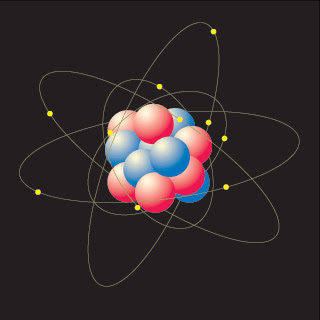Photochemistry is concerned with reactions which are initiated by electronically excited molecules. Such molecules are produced by the absorption of suitable radiation in the visible and near ultraviolet region of the spectrum.
Photochemistry
(فتو شیمی) is basic to the world we live in. With
SUN as the central figure, the origin of life itself must have been a photochemical act. In the primitive earth conditions radiation from the sun was the only source of energy. Simple gaseous molecules like methane, ammonia and carbon dioxide must have reacted photochemically to synthesize complex organic molecules like proteins and nucleic acids.

Through the ages, nature has perfected her machinery for the utilization of solar radiant energy for all photobiological phenomena and providing food for the propagation of life itself.
Photobiology, the photochemistry of biological reactions, is a rapidly developing subject and helps the understanding of phenomena like:
Photosynthesis (فتوسنتز),
Phototaxis,
Phototropism,
Photoperiodism,
Photodynamic action, Vision and
Mutagenic effects of light. In doing so it tries to integrate knowledge of physics, chemistry and biology.
What is Photochemistry?Photochemistry is the study of light-induced chemical reactions and physical processes. A photochemical event involves the absorption of
light to create an excited species that may subsequently undergo a number of different reactions. These include unimolecular reactions such as dissociation, ionization, and isomerization; bimolecular reactions, which involve a reaction with a molecule or atom to form a new compound; and reactions producing an
emission of light, or
luminescence. A photochemical reaction differs notably from a thermally, or
heat, induced reaction in that the
rate of a photochemical reaction is frequently greatly accelerated, and the products of the photochemical reaction may be impossible to produce otherwise. With the advent of lasers (powerful, single-color light sources) the field of photochemistry has advanced tremendously over the past few decades. An increased understanding of photochemistry has great implications outside of the laboratory, as photochemical reactions are an extremely important aspect of everyday life, underlying the processes of
vision,
photosynthesis,
photography, atmospheric
chemistry, the production of
smog, and the destruction of the
ozone layer.
The absorption of light by
atoms and molecules to create an excited species is studied in the field of
spectroscopy. The study of the reactions of this excited species is the domain of photochemistry. However, the fields are closely related; spectroscopy is routinely used by photochemists as a tool for identifying reaction pathways and products and, recently, for following reactions as they occur in real time. Some lasers can produce a pulse of light that is only "on" for 1 femtosecond (10-15 seconds). A femtosecond
laser can be used like an extremely high-speed strobe camera to spectroscopically "photograph" a photochemical reaction.
## Sunshine-to-Petrol Project Seeks Fuel From Thin Air## A Solar Grand Plan (Scientific American )
## 13 Cutting-Edge Solar Energy Orgs



































